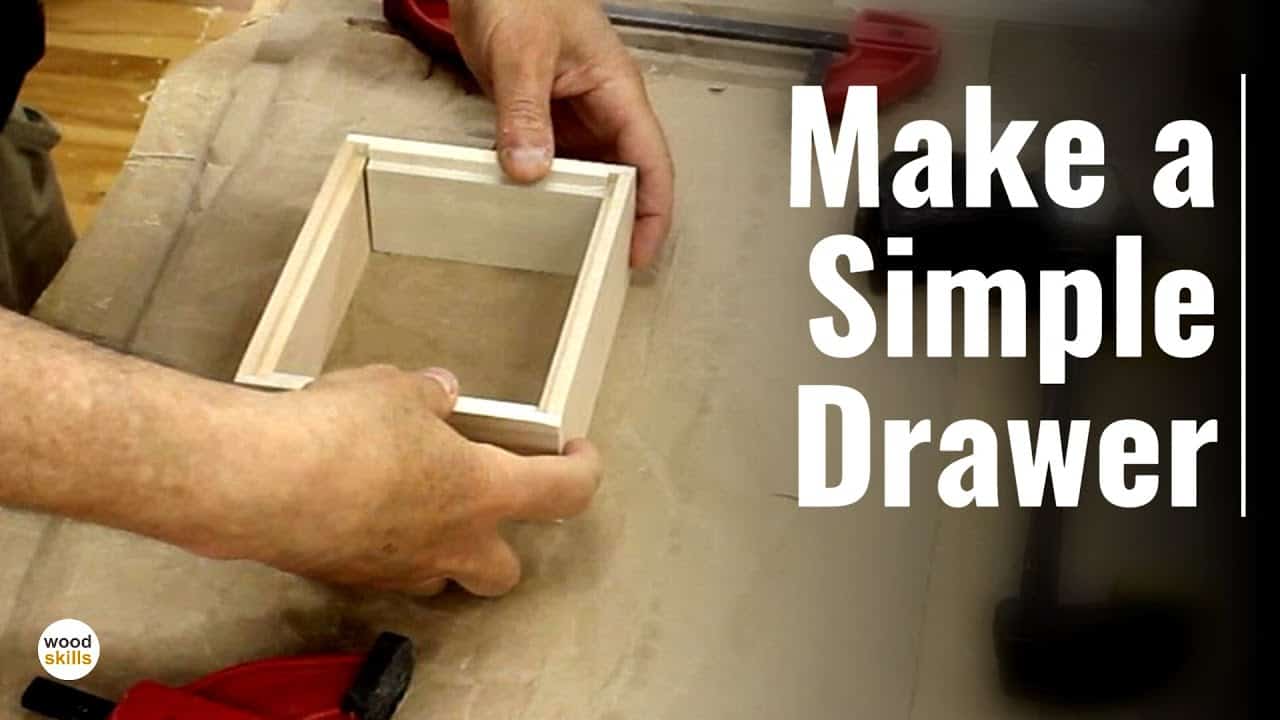Norman Pirollo from WoodSkills shared the woodworking tip featured in this video.
The video walks through a practical approach to making simple, strong drawers using rabbet joinery and glue as the only reinforcement, with emphasis on fit, glue management, and final trimming to the cabinet opening.
Watch the full video and subscribe to WoodSkills:
Design and Purpose
The approach favors simplicity and reliability: rabbets increase glue-to-wood contact and produce very strong corner joints without mechanical fasteners.
Norman frames the method as adaptable to both router-based and hand-tool workflows, making it suitable for a range of shop setups and skill levels.
Preparation and Fit
Careful dry fitting is presented as the most important step before any glue touches the parts, with all clamps staged and ready to avoid rushed decisions during glue-up.
Parts are intentionally left slightly oversized so the drawer can be trimmed and fine-tuned to its compartment after assembly, ensuring a precise final fit.
Rabbet Joinery and Glue Technique
Instead of slathering glue at the last minute, Norman sizes the end grain and rabbet surfaces first so the porous ends won’t absorb all the glue and starve the joint.
Glue is applied to both the interior rabbet and the exterior mating surfaces, and excess squeeze-out is removed once it reaches a rubbery consistency to keep cleanup manageable.
Clamping and Squaring
Clamping strategy matters: the drawer is clamped with the top up so any squeeze-out drips toward the bottom and is easier to clean, and clamps are adjusted until the assembly is square.
Diagonal measurements are used to verify squareness before the glue fully sets, and slight adjustments are made to prevent skewed assemblies that can require disassembly and repair.
Bottom Panel and Final Fit
The drawer bottom is made from veneered plywood and is fitted into the bottom rabbet, glued in place to add stiffness and stability to the box.
The assembled drawer is cleaned and then trimmed to match the cabinet opening, using the extra material left during glue-up as allowance for a perfect final adjustment.
Lessons and Adaptations
The workflow highlights key shop habits: test-fit thoroughly, size end grain, control squeeze-out, and check for square—habits that reduce costly mistakes and rework.
These techniques are versatile and can be adapted for different joinery tools, plywood bottoms, or drawer styles while retaining the same focus on fit and glue management.
Watch the full video and subscribe to WoodSkills:
